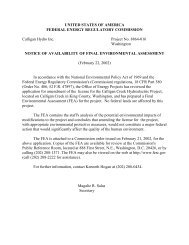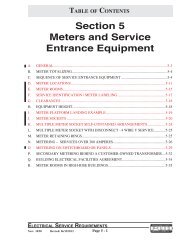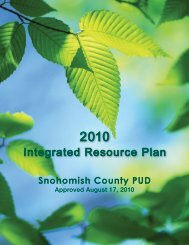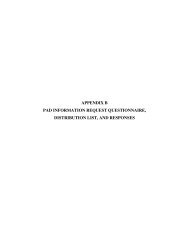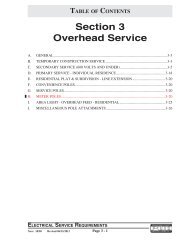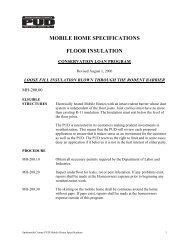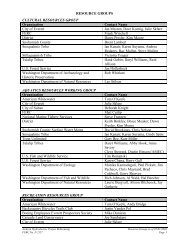Tidal_PAD_V1_Sec4.pdf - Snohomish County PUD
Tidal_PAD_V1_Sec4.pdf - Snohomish County PUD
Tidal_PAD_V1_Sec4.pdf - Snohomish County PUD
You also want an ePaper? Increase the reach of your titles
YUMPU automatically turns print PDFs into web optimized ePapers that Google loves.
<strong>Snohomish</strong> <strong>County</strong> <strong>PUD</strong> –Pre-Application Document<br />
4 – Existing Environment<br />
Salmonids in Agate and Rich Passages<br />
Agate and Rich Passages both display similar habitat characteristics for salmonids and are located<br />
close to Lake Washington and the Duwamish River—notable areas for sockeye and coho<br />
production (Good et al., 2005; SSPS, 2007). In addition, the Duwamish River also supports a run<br />
of odd-year pink salmon (NOAA, 1996). The passages are surrounded by small coastal freshwater<br />
streams that are used by coho for spawning, and coho populations produced in Port Orchard waters<br />
are likely to pass through either Agate or Rich Passage upon entry into the primary Puget Sound<br />
channel (SSPS 2007). Coho species may hold in and around Agate or Rich Passage before<br />
entering into the Sound, creating the possibility for species to be present year around. In addition,<br />
the sheltered waters of Port Orchard may also provide foraging areas for juvenile and adult<br />
sockeye and pink salmon (NOAA 1996b; Williams et al. 2003).<br />
The freshwater streams and rivers adjacent to Agate and Rich Passages also provide habitat for<br />
coastal cutthroat trout. Notable nearby rivers include the Cedar, White, Puyallup, and Nisqually.<br />
These freshwater bodies support anadromous cutthroat that move into the proximal nearshore<br />
marine habitats. During the m arine rearing phase, it is likely that a small number of cutthroat may<br />
move into either Agate or Rich Passage to feed along the adjacent shorelines. Cutthroat may be<br />
present year around, but neither project area was identified as primary marine rearing habitat for<br />
cutthroat trout (Williams et al. 2003).<br />
4.4.3 Non-Salmonid Fish<br />
The following section addresses important fish guilds within Puget Sound. It is expected that at<br />
least a portion of each fish guild will be present in all project areas. Salmonids are addressed<br />
separately in Section 4.4.2, due to life histo ry complexity and overall importance to numerous<br />
parties. ESA-listed species are covered sepa rately in Section 4.7. The species that are addressed<br />
within this section include demersal fish, pelagic schooling fish, anadromous fish (other than<br />
salmonids), and sharks, skates and rays (elasmobranchs).<br />
4-76 January 31, 2008




